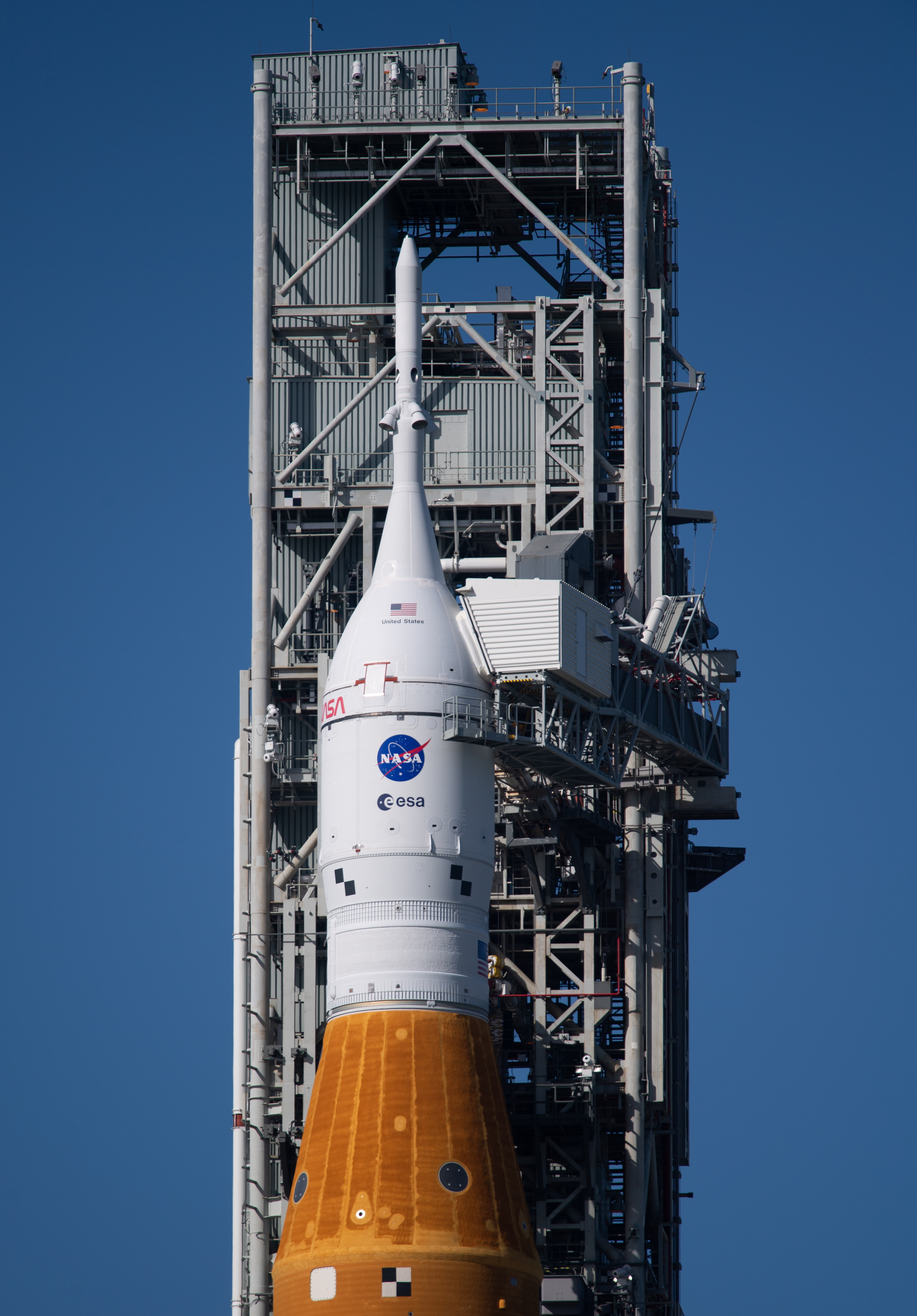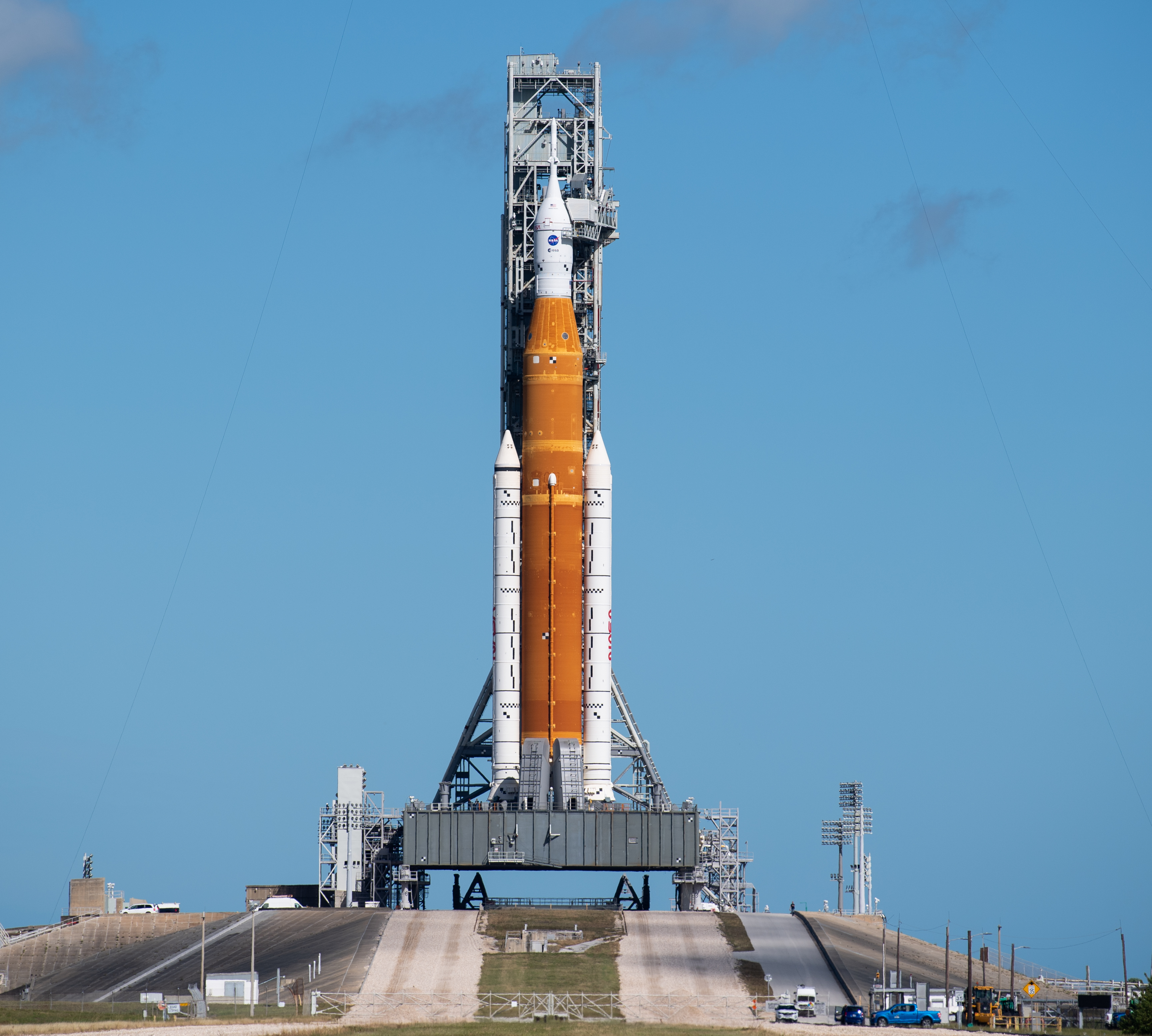Orion is the name of a spacecraft designed to take human explorers farther into space than any previous craft. The craft is designed to sustain astronauts during a long mission into deep space and return them safely to Earth. Orion was developed by the United States National Aeronautics and Space Administration (NASA). NASA plans to use the Orion spacecraft to carry astronauts to the moon and Mars.

Orion can support a crew of four astronauts for three weeks. The part of the spacecraft where the crew lives is called the crew module. It provides a pressurized environment and maintains breathable air. The crew module is equipped with storage for food and water. It also has a toilet and an exercise machine. The crew module contains the control system that astronauts can use to pilot the spacecraft.
The crew module’s exterior is built with strong protection against heat. This protection includes a large ablative heat shield. Ablative shields absorb heat by burning off the spacecraft, layer by layer. The crew module is also equipped with a reaction control system—a set of small rockets that keep it oriented correctly during flight.
Orion’s service module provides power and life support for the crew module. The service module’s solar panels produce electricity. Its thermal control system keeps Orion at a safe, comfortable temperature for astronauts and equipment. The service module also carries tanks of water, nitrogen, and oxygen to keep the crew alive. The service module was developed by the European Space Agency (ESA).
The long, pointed tip of the spacecraft is the Launch Abort System (LAS). The LAS keeps astronauts safe if a problem occurs during launch. If sensors detect a problem with the launch rocket, the LAS immediately activates. The LAS rockets propel the crew module away from the malfunctioning launch rocket. The LAS then helps the crew module land safely in the ocean.
Orion is launched into space using a powerful heavy-lift rocket called the Space Launch System (SLS). The SLS uses solid-fuel rocket boosters to carry heavy loads into space. It is the most powerful rocket ever built for launching a space exploration vehicle.

The first successful unpiloted test flight of the Orion spacecraft took place in 2014. The test mission launched on a Delta IV heavy rocket. Development of the SLS had not yet been completed. The Orion craft orbited Earth twice before it splashed down in the Pacific Ocean. A second test flight, in 2018, also used the Delta IV heavy rocket.
NASA uses Orion in its Artemis program, which is designed to send astronauts to the moon. The first Artemis mission, Artemis 1, used an uncrewed Orion spacecraft. The mission launched on Nov. 16, 2022. It was the first combined test flight of Orion and the SLS. The Orion spacecraft traveled beyond the moon on a three-week flight, then returned to Earth on Dec. 11, 2022. The next Artemis missions are expected to take place later in the 2020’s.
See also Mann, Nicole Aunapu; Space exploration (Living in space); Space exploration (Traveling in space).
